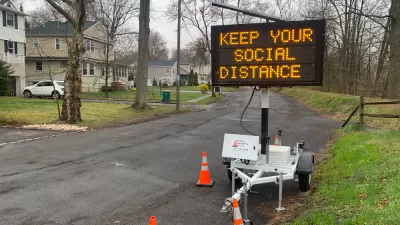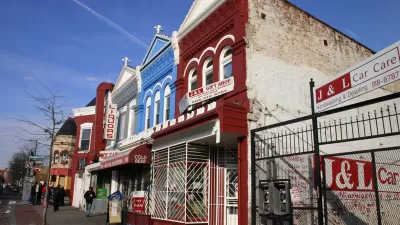Jim Russell and Daniel Kay Hertz are engaged in an ongoing debate about how supply and demand in markets of so-called "superstar metros" influences processes of gentrification.
Jim Russell writes the most recent installment in the debate, clarifying points he originally made about recent academic research "that adds to the literature about the real estate market problems caused by limited (by whatever means) supply." The original report is called Superstar Cities, authored by Joseph Gyourko, Christopher Mayer, and Todd Sinai.
Russell's clarifying point: "What defines the geographic variance in [the research] case is the quality of demand, not the restriction of supply. Lots of places have some sort of constraint on housing. Few of those places qualify as 'superstar'….Within a metro, quality of supply matters, too."
Russell's most recent post responded to a post by Daniel Kay Hertz saying that Russell originally turned the conclusion of the study on its head. From Hertz's analysis of the white paper: "The housing crisis that’s led to wildly growing income segregation everywhere from Chicago to Kansas City is, actually, about 'demand outstripping supply.' And this paper is just the last in a long line of research supporting that conclusion."
FULL STORY: Turning Real Estate Market Fundamentals on Their Head

Planetizen Federal Action Tracker
A weekly monitor of how Trump’s orders and actions are impacting planners and planning in America.

Maui's Vacation Rental Debate Turns Ugly
Verbal attacks, misinformation campaigns and fistfights plague a high-stakes debate to convert thousands of vacation rentals into long-term housing.

Restaurant Patios Were a Pandemic Win — Why Were They so Hard to Keep?
Social distancing requirements and changes in travel patterns prompted cities to pilot new uses for street and sidewalk space. Then it got complicated.

In California Battle of Housing vs. Environment, Housing Just Won
A new state law significantly limits the power of CEQA, an environmental review law that served as a powerful tool for blocking new development.

Boulder Eliminates Parking Minimums Citywide
Officials estimate the cost of building a single underground parking space at up to $100,000.

Orange County, Florida Adopts Largest US “Sprawl Repair” Code
The ‘Orange Code’ seeks to rectify decades of sprawl-inducing, car-oriented development.
Urban Design for Planners 1: Software Tools
This six-course series explores essential urban design concepts using open source software and equips planners with the tools they need to participate fully in the urban design process.
Planning for Universal Design
Learn the tools for implementing Universal Design in planning regulations.
Heyer Gruel & Associates PA
JM Goldson LLC
Custer County Colorado
City of Camden Redevelopment Agency
City of Astoria
Transportation Research & Education Center (TREC) at Portland State University
Jefferson Parish Government
Camden Redevelopment Agency
City of Claremont





























